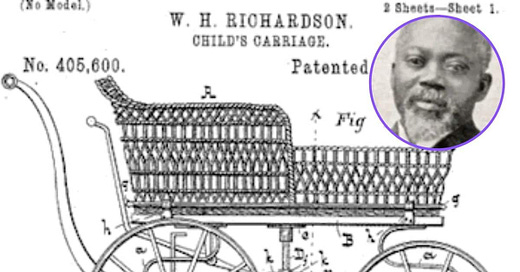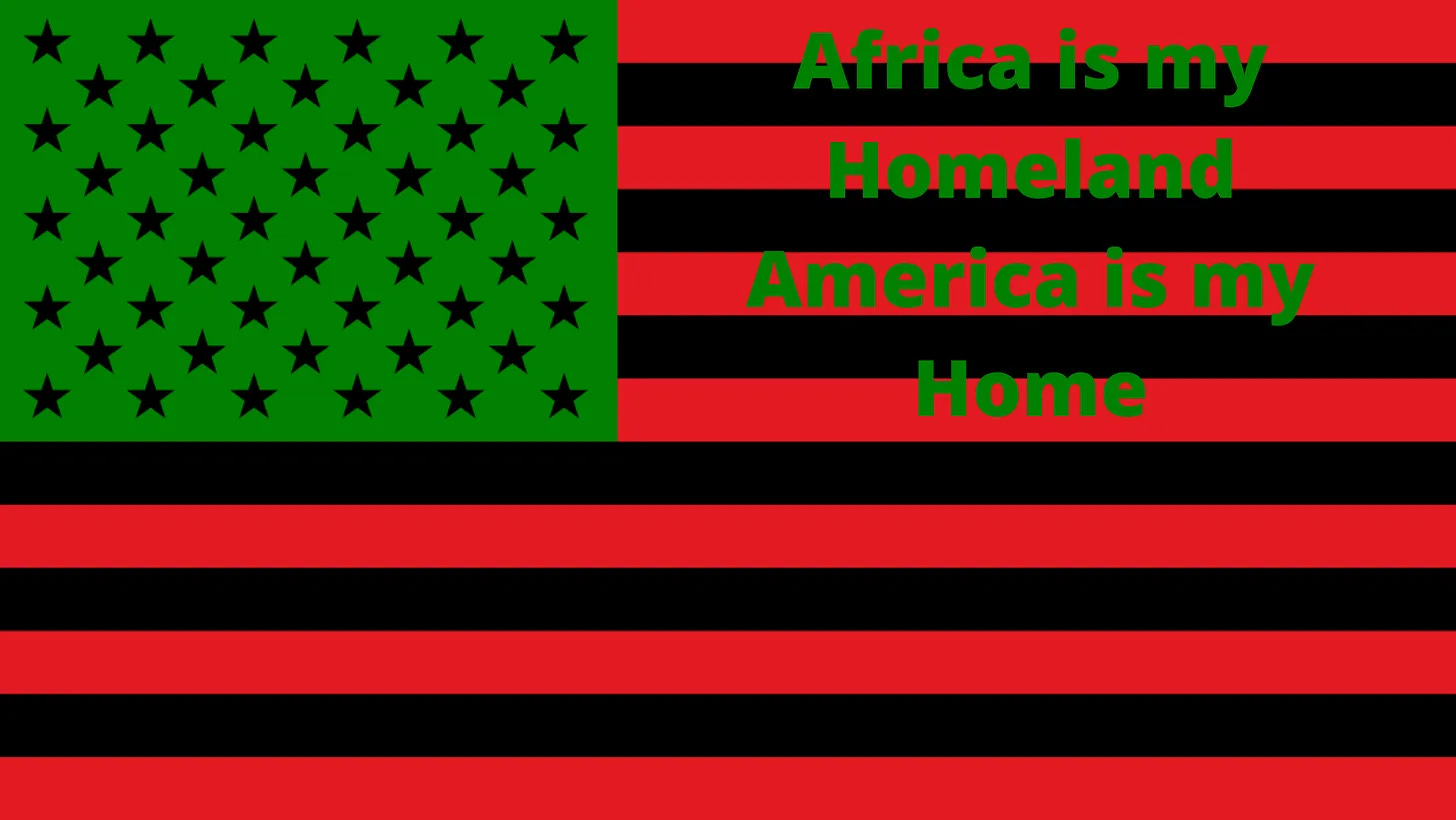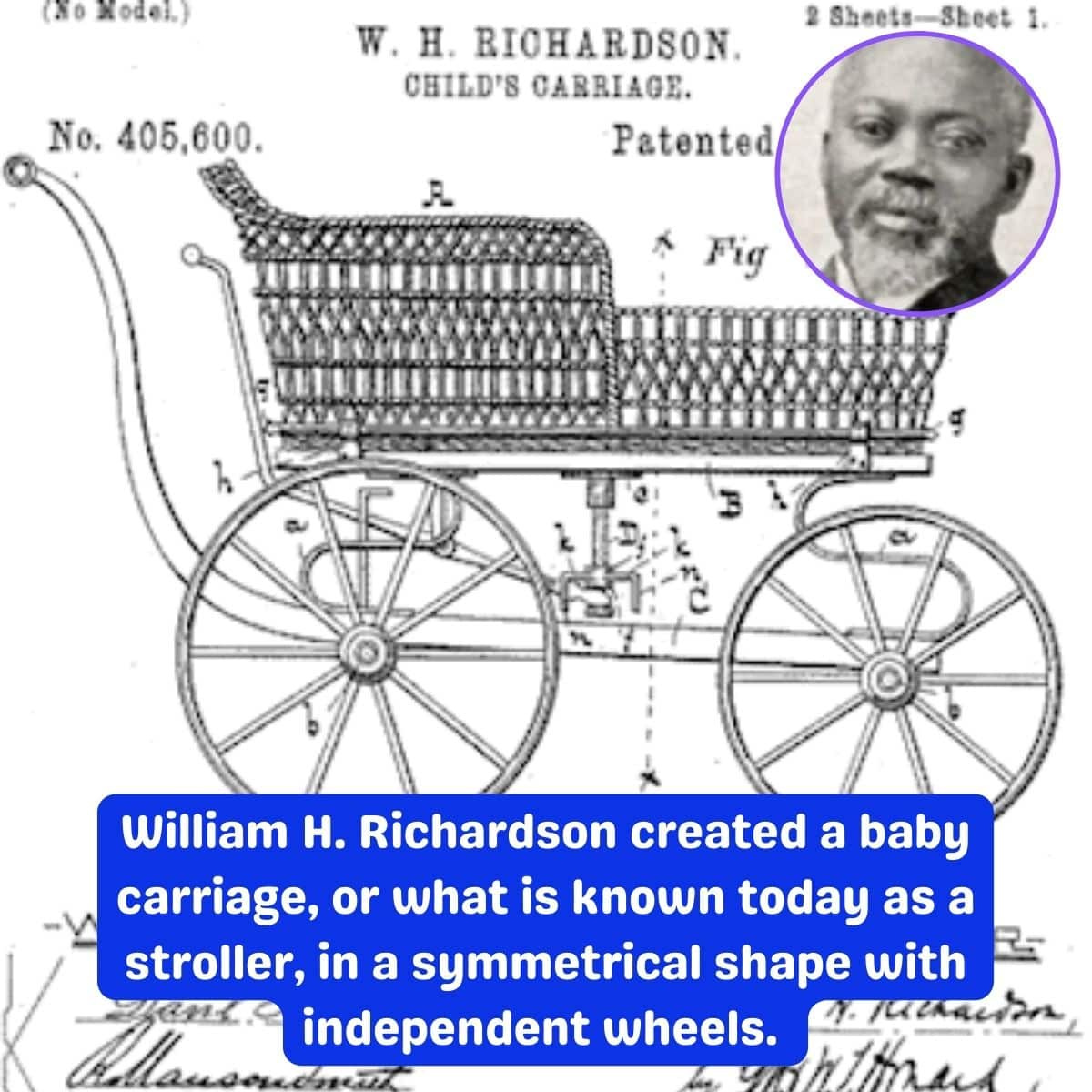Today In Black History: William H. Richardson
Inventor of the modern baby carriage/stroller
Issue #835 Today In Black History, Friday, April 4, 2025
If you like us, REALLY like us, please click the “Like” button at the end of this post!
Your “Likes” mean a LOT to us! We appreciate your support!
Our April, 2025 subscriber goals are 200 new free subscribers and 100 new paid subscribers! You can help us reach our goal!
Follow Pam on Bluesky, the best “X” alternative.
Follow Keith on Bluesky, the best “X alternative.
We appreciate your support!
Engage with us and our posts in Substack Notes, where we post almost daily.
You’ve seen them everywhere. You’ve probably used them yourself. I’m talking about the ubiquitous modern baby carriage, or stroller, as they’re called today, made possible by Black inventor William H. Richardson.
William H. Richardson was born on January 5, 1858, in Baltimore, Maryland. Not much is known about his life except in 1899, he had an idea about how to improve the baby carriage, making it more usable and more affordable.
The original baby carriage, also known as a perambulator or pram, was invented in 1733 by English architect William Kent for the Duke of Devonshire. This early version was designed for the duke's children and resembled a miniature horse-drawn carriage. It was intended to be pulled by a small pony or goat and featured a basket-like structure where the child could sit. Only the upper classes could afford this elaborate baby carriage.
Although the baby carriage went through significant developments and improvements over the years, in 1899, William H. Richardson, an African American inventor from Baltimore, patented a new design for the baby carriage that revolutionized its functionality.
His design allowed the bassinet to be reversible, meaning it could face either toward or away from the person pushing the carriage. This innovation provided greater convenience and interaction between the caregiver and the child. Richardson's design also incorporated larger wheels for improved maneuverability, making the carriage more practical and easier to use.
Richardson decided to create a carriage, or what we call a stroller today, to be shaped more like a symmetrical basket, rather than a shell, as it was previously designed.
This new design made it easier for parents and nannies to move the carriage around 360 degrees, compared to only 90 degrees before. The big part of Richardson’s change to the baby carriage is that it was now reversible, making it possible to have anyone pushing the baby face them instead of facing in the opposite direction.
Because of William H. Richardson, baby carriages and strollers became more affordable, gaining popularity and becoming a staple for families not just in America but globally.
Today In Black History
In 1953, the first chapter of the international honor society, Phi Beta Kappa, was established at an HBCU, Fisk University.
In 1960, the African nation of Senegal declared independence from France.
In 1968, Nobel Peace Prize Awardee and Civil Rights Leader Rev. Dr. Martin Luther King was assassinated in Memphis, Tennessee by an escaped convict, James Earl Ray.
All “We Are Speaking” posts are now free for everyone to read, and commenting on our posts is now open to everyone!
Share this post:
Share this publication:
Our subscriber goals for April 2025 include 200 new free subscribers and 100 new paid subscribers. Click the link to help us reach our goals!
Our paid subscribers are encouraged to discuss this post in our W.A.S. Chat Community.
Join Pamela Hilliard Owens’s subscriber chat
Available in the Substack app and on the web
You are also welcome to view “We Are Speaking” in Substack Notes. You can also read other Substack publications without subscribing to them when you join Notes.
Did you know that you can listen to each “We Are Speaking” post and engage directly with us on the Substack App? Download the app!
Please check out Keith’s AfroFantasy Detroit Substack for posts about fantasy, sci-fi, and Afrofuturism!







I love this! I just wrote about two Black men who built homes without using any floor plans as having much in common with a Brown Thrasher I saw once building her nest.